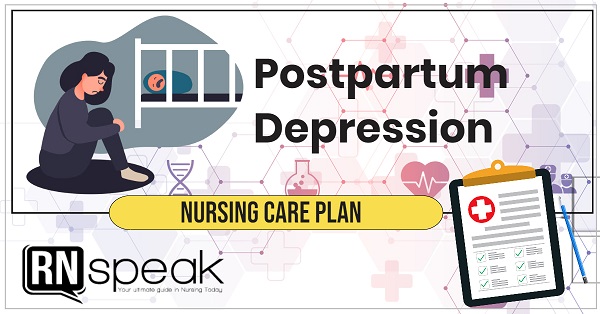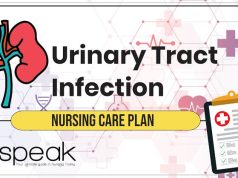Did you know? – The prevalence rate of postpartum depression among new mothers is about 10%. Almost every new mother notices alterations in their feelings or mood after giving birth. Disturbances in function, affect, or thought processes are characteristics of affective or mood disorders. When this condition affects the family after giving birth, it can be categorized as either postpartum blues, postpartum depression, or postpartum psychosis.
Difference Between Postpartum Blues, Depression, and Psychosis
Postpartum blues is a mild depression only. It is also known as ‘baby blues’ or ‘maternity blues.’ This is a frequent concern of new mothers. The condition begins in the first week, and it lasts no longer than 2 weeks and is characterized by insomnia, fatigue, irritability, tearfulness, anxiety, and unstable mood. Baby blues is self-limiting, meaning to say, after 2 weeks, it goes away. However, mothers benefit greatly when the family and health care team are providing empathy and support.
Postpartum depression (PPD), on the other hand, occurs during the first 3 weeks to 3 months, but it may occur anytime during the first year after giving birth. Primigravidas are more likely to develop PPD. Women experiencing PPD have less interest in their environment feel the infant is demanding. She also has strong feelings of guilt, unworthiness, shame, and frequently expresses a sense of loss of self. Clinical signs and symptoms are generalized fatigue, irritability, anxiety, concentration and decision-making difficulties, appetite changes, sleep disturbances, and altered weight. PPD is differentiated from postpartum blues by checking out the symptoms’ number, intensity, and persistence.
Postpartum psychosis is a rare condition. The clinical manifestations generally surface within 1-3 months of delivery. One important risk factor for developing postpartum psychosis is a history of bipolar disorder. Symptoms noted to affected individuals are sleep problems, confusion, irritability, agitation, hallucinations, and delusions. What makes this condition dangerous, is the possibility of the mother killing her baby. Furthermore, poor appetite, feelings of worthlessness and guilt, and inordinate concern towards the health of the infant are also manifested by affected mothers.
Comparison of Postpartum Blues, Depression and Psychosis |
|||
| POSTPARTAL BLUES | POSTPARTAL DEPRESSION | POSTPARTAL PSYHOSIS | |
| ONSET | 1-10 days after giving birth | 1-2 months after giving birth | Within the first to third month after giving birth |
| SYMPTOMS | Sadness, tears | Anxiety, feelings of loss, sadness | Delusions or hallucinations of harming infant or self |
| INCIDENCE | 70% of all births | 10% of all births | 1% to 2% of all births |
| ETIOLOGY | Probably caused by hormonal changes, stress of life changes | History of previous depression, hormonal response, lack of social support | Possible activation of previous mental illness, hormonal changes, family history of bipolar disorder |
| THERAPY | Support, empathy | Counseling, drug therapy | Psychotherapy, drug therapy |
| NURSING NOTE | Offering compassion and understanding | Referring to counseling | Referring to counseling, safeguarding mother from injury to self or to newborns. |
Comparison Table Source: Pillitteri, A. (2007). Maternal and Child Health Nursing: Care of the Childbearing and Childbearing Family. 5th Edition
Nursing care plan postpartum depression
Postpartum depression affects not only the woman negatively, but it has an impact on the entire family. Oftentimes, it causes relationship difficulties and causes strains on each family member’s usual coping strategies. To keep depression away, mothers, especially the young ones, should be prepared for the rapid lifestyle changes occurring after birth. During the prenatal period, a discussion about the postpartum period and parenting should be discussed to provide anticipatory guidance about the early weeks at home.
Can we predict whether a woman will develop postpartum depression or not? The answer is uncertain, as childbirth can produce a variety of reactions from different women. For those who developed postpartum depression, counseling and antidepressant therapy may be required. This is crucial to keep a mother-infant bonding healthy, keep other children in the family in good condition, and maintain optimum health for the whole family in general.
See Also
- Postpartum Clients Nursing Consideration
- Fluid Volume Deficit-Post Partum Hemorrhage Nursing Care Plan
Reference
- Murray, S. & McKinney, E. (2006). Foundations of Maternal-Newborn Nursing. 4th Edition
- Pillitteri, A. (2007). Maternal and Child Health Nursing: Care of the Childbearing and Childbearing Family. 5th Edition
- Doenges, M. , Moorhouse, M., Geissler-Murr, A. (2004). Nurse’s Pocket Guide: Diagnoses, Interventions and Rationales. 9th Edition
- Videbeck, S., (2008). Psychiatric-Mental Health Nursing. 4th Edition








